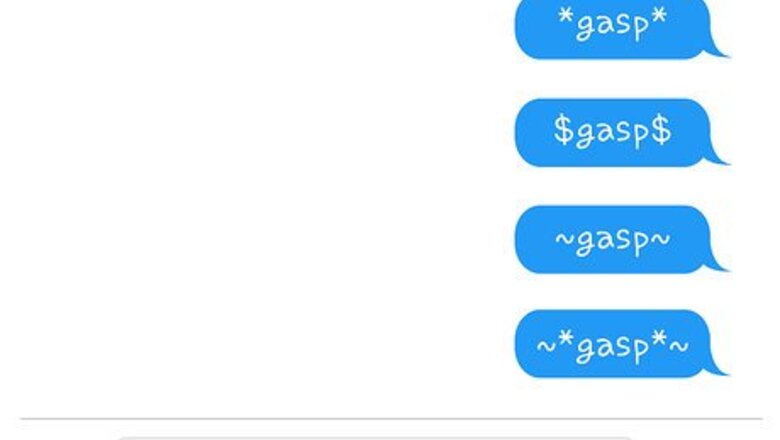
views
Improving Your Gasping in Text
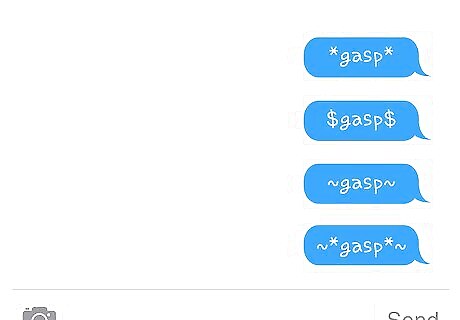
Highlight gasps with symbols. Simply typing the word “gasp” in a text message lacks punch. But by adding some uncommon symbols around the text, it’ll become more eye-catching and pronounced. Some common examples follow: *gasp* $gasp$ #gasp ~gasp~ ~*gasp*~ +gasp+
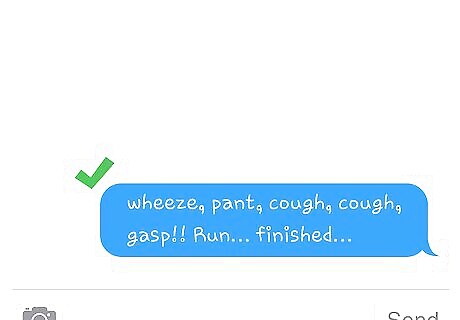
String together similar sounds to exaggerate gasps. Words that express a sound (also called onomatopoeia) can build up to a gasp comedically. For example, if you just got back from a tough run and were returning a text to a friend, you might type, “wheeze, pant, cough, cough, gasp! Run… finished…”
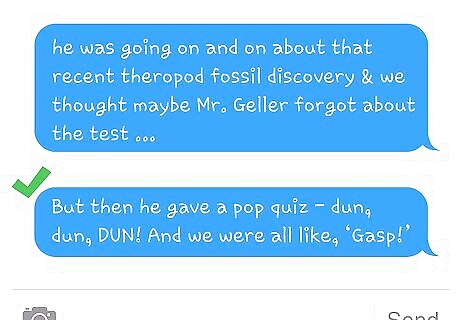
Lead in to the gasp. There is a pattern in many movies and TV shows where when something bad happens, music plays in a descending “dun, dun, DUN." You could use this as a lead in to a gasp. For example, you might text a friend, “But then he gave a pop quiz – dun, dun, DUN! And we were all like, ‘Gasp!’ ” To insert more gasping into your daily texting, instead of saying you are surprised or shocked or scared, respond with a gasp.
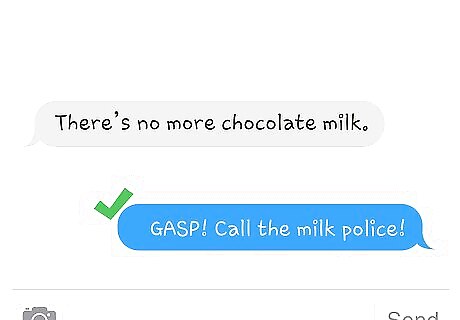
Gasp in caps to make it emphasized. This has an even better dramatic effect if you only rarely use all-caps. It’s also great for sarcastic situations, like when your sister texts you, “There’s no more chocolate milk.” This is a perfect place to reply with, “GASP! Call the milk police!” Another example you might run across is when someone says something obvious, like, “Yesterday was Friday.” You can poke fun by saying, “GASP! No way!”
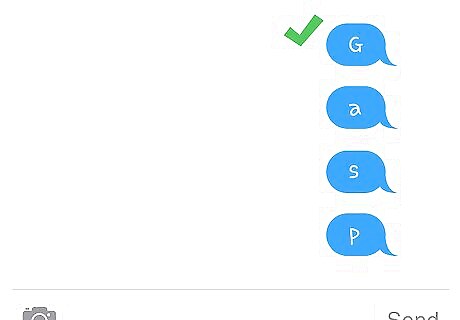
Send your gasp one letter at a time to build suspense. At first, the recipient might think you accidentally sent a typo. That’s the beauty of this technique - it’s great for taking people by surprise. One letter per text, spell out your message: G a s p
Depicting a Gasp with Symbols (Emoji/Emoticons)
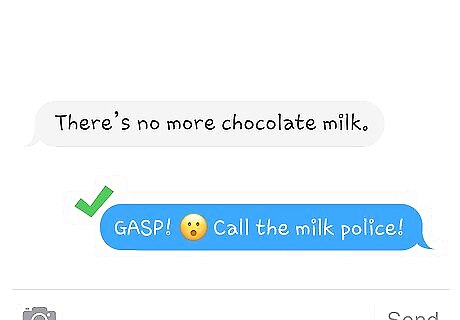
Use emoticons to represent a gasp. Emoticons represent eyes with a colon or semi-colon, noses with hyphens (sometimes), and parentheses or brackets for mouths, as in :-) , :) , ;-) , or ;) . Many phones automatically convert smiley symbol combinations, like :-) , to smiley emoticons (which are like clip art). To make a gasp, use a circular shape for the mouth, like: :-O :O : o {: o
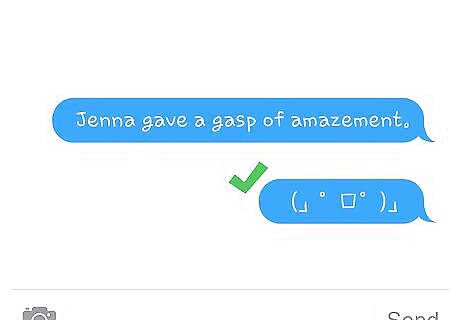
Represent gasping with square-mouthed emoji. This style is most common in Asian countries, particularly Japan. The big, square mouth represents the jaw-dropping that usually occurs during an authentic gasp. Copy and paste some of the following examples when you want to gasp in text: (・□・;) (」゜ロ゜)」 ┌╏ º □ º ╏┐ (*〇□〇)……!
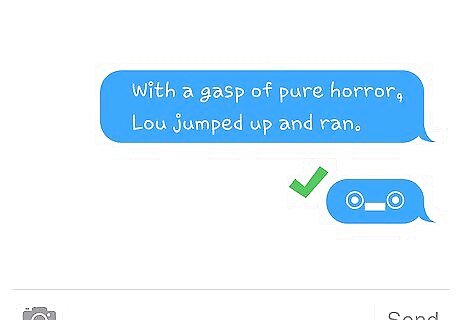
Gasp in Unicode. Unicode has a long tradition of using creative symbols to express feelings in text. Some Unicode designs can be incredibly complex, and the wide variety of symbols available allows for a more realistic representation of certain expressions, like the following Unicode gasp emoji, which you can copy and paste: ˚▱˚ (small gasp) ⊙▂⊙ (medium gasp) ⊙▃⊙ (large gasp)
Conveying Other Emotions
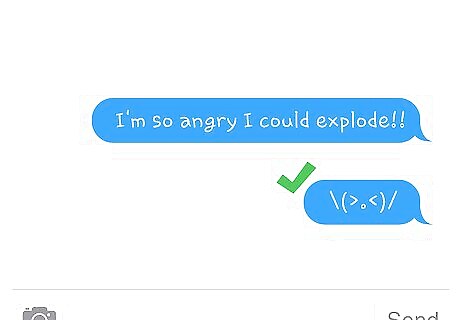
Master the basic emoticons. There’s an emoticon for nearly every circumstance. By familiarizing yourself with common emoticons, you’ll be able to recall them and type them out when needed. Some common emoticons follow: Happy: :-) • :) • :-] • :] • :-> • :-} • =) Sad: :-( • :( • :-c • :-< • :-[ Angry: >:-[ • >: ( • \(>.<)/ Laughing/big grin: :-D • :D • 8-D • X-D • =D

Show positivity with quick responses and plenty of emoticons. Respond to texts as soon as you are able, as people tend to interpret quick responses favorably. Emoticons, especially those that indicate a positive emotion, like smiling or laughing, will add a happier atmosphere to your texts. Typing longer, more detailed messages is usually a sign that you’ve put thought and effort into a text. Text with proper punctuation. Many people regard proper punctuation as a sign of respect and/or good manners.
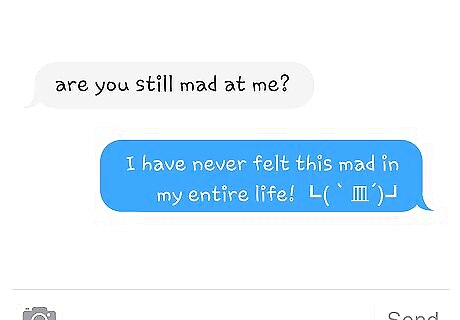
Emphasize strong emotions with symbols. This is similar to how you’d offset gasping in text. Sometimes, a strong emotion or short phrase says it all. In these cases, simply respond with text responses offset with symbols, like “#rage” or “*table flip*” or “~*sigh*~”. This technique works well with strong statements that are usually short. Long phrases emphasized this way might be interpreted as over the top.
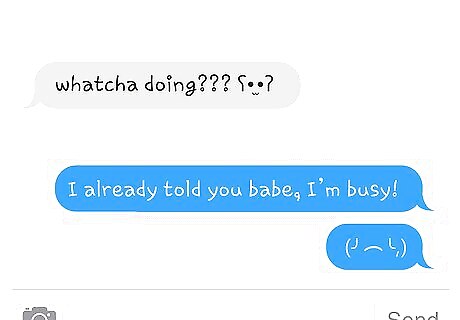
Clarify vague messages with emoticons. An emoticon can add a lot of context. Take, for example, the message, “I’m busy.” This could mean that you have other plans, that you have work to do, that you’re sad but occupied, or it might mean something along the lines of, “I already told you, you know I’m busy!” These meanings could be clarified in the following ways: With a blushing smiley: I’m busy (#^.^#) With a sweating smiley: I’m busy -_-; With a crying smiley: I’m busy :’( With an angry smiley: I’m busy >: (













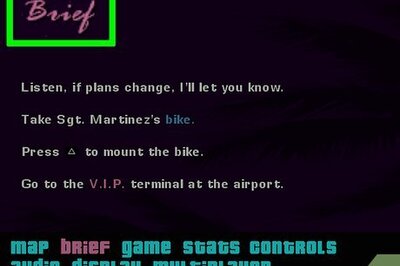




Comments
0 comment